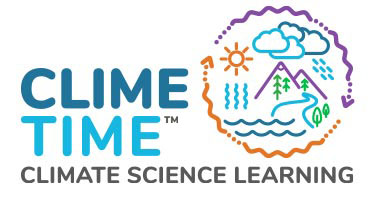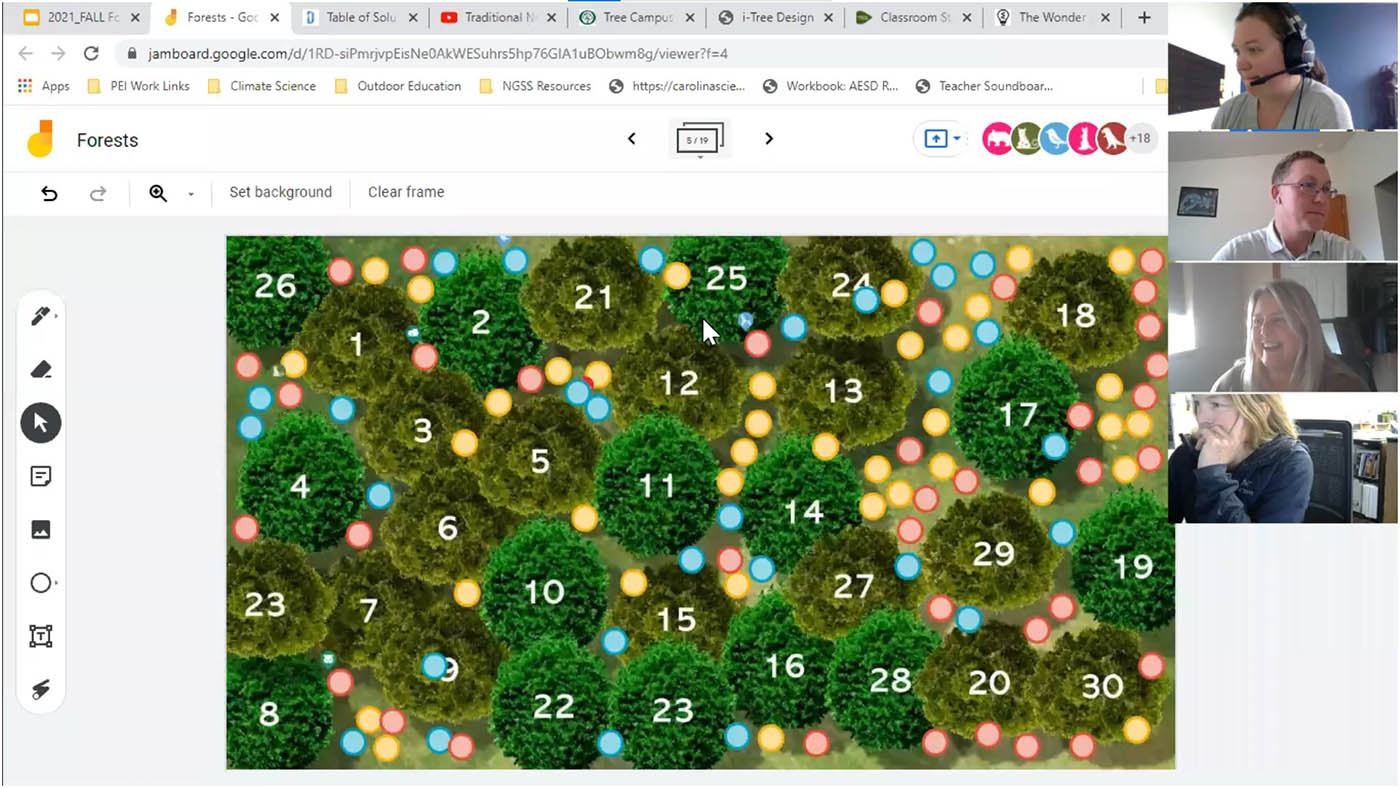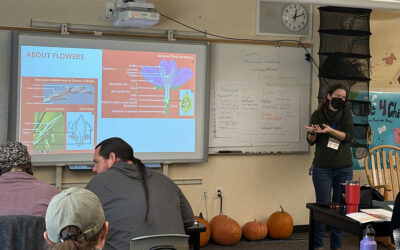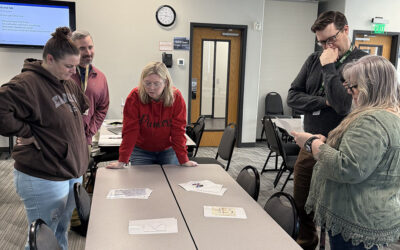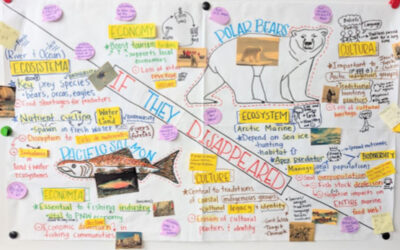Workshop participants took on the role of trees and competed with each other for carbon, nutrients, and water.
When Pacific Education Institute and two Central Washington Educational Service Districts thought about how to best serve the teachers in their region, an obvious need was to offer as many options to access content as possible. So instead of offering one session for teachers in ESD 105 and a second for ESD 171 teachers, they combined the two groups to offer two sessions for all teachers, giving more opportunities for very busy educators to access the content on their time. The forward thinking of the three groups correlated with higher interest in both sessions and deeper engagement in the learning.
Each offering was divided into three parts: an online, introductory Zoom experience with the content and community partners, an asynchronous deep dive into curricula and individual research into local Indigenous agency work in forest management, and a second online Zoom experience to work with other educators around the state to collaborate and reflect on the materials and resources.
Participants were able to speak to experts about forest management and decision-making with Marla Bieker of Western Pacific Timber LLC, and explored the various projects across Washington State and agency involvement with Rod Pfeifle of Department of Fish and Wildlife.
During the asynchronous work, participants explored the amount of carbon sequestered by trees on their property or schoolyards with scaffolded options for data analysis at each grade band. “This activity was so great! My students and I learned a lot from measuring these trees around our school property” stated an Okanogan-area teacher. “I was able to tie this science lesson in with our social studies unit in WA state history regarding the importance of trees in Washington state, as well as around the world. […] We’ve discussed climate change already this year, as well as forest fires and drought, so this lesson drew on the student’s prior knowledge and added to their understanding. So much fun!”
A discussion about student voice turned into a competitive game of survival as participants took on the role of trees to collect carbon, nutrients, and water. There, participants reflected on how a game can turn into a scientific model with student input, giving students a chance to show what they know to make the model more closely represent real life. Participants also discussed the limitations of the activity. “My tree had unstable WIFI I think,” stated one participant.
Hosting the two separate sessions was a fantastic success. Overall, participants from 17 different school districts attended, representing over 2,000 students across Central Washington. Five teachers have already committed to implementing all or part of this storyline, with three educators having already engaged their students in the activities during their SOLS Forest Carbon professional learning sessions!
